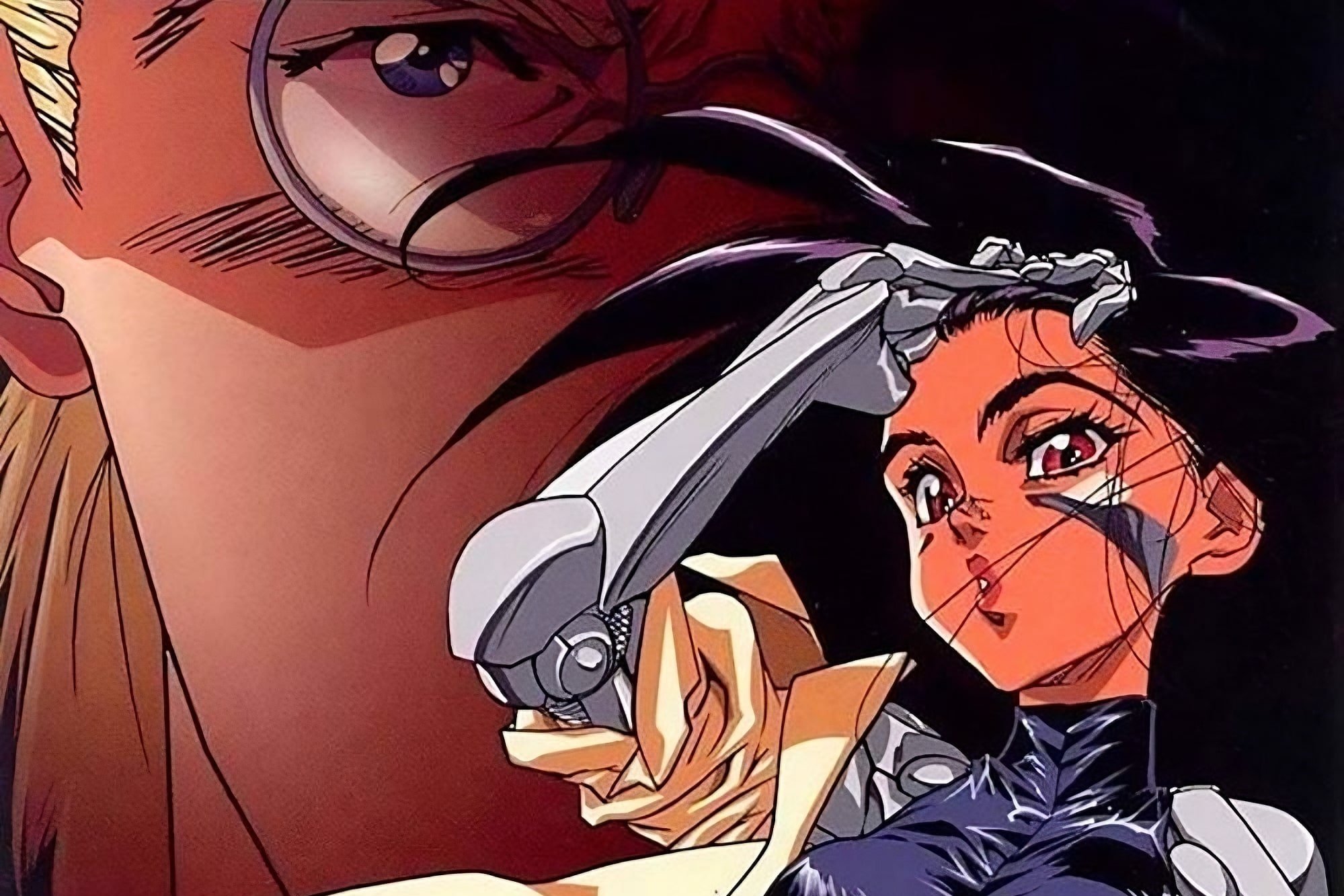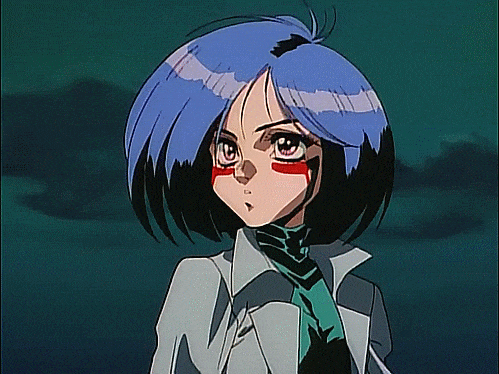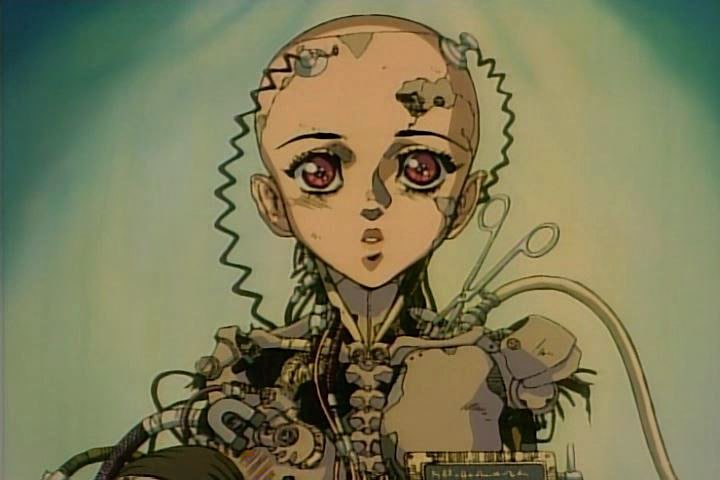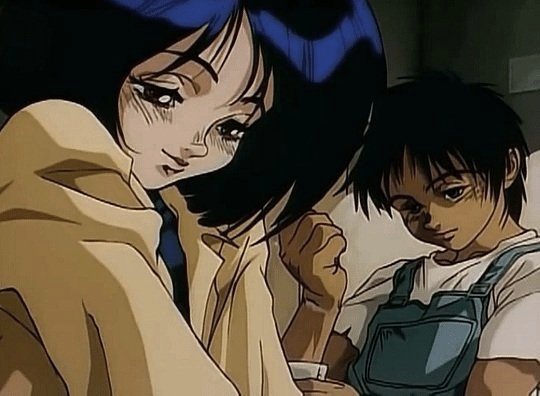Battle Angel Alita
/TITLE Battle Angel
DIRECTOR Hiroshi Fukutomi
STUDIO Madhouse
YEAR 1993
COUNTRY Japan
FILM REVIEW by Howard Leigh
The Battle Angel OVA, directed by Hiroshi Fukutomi, is a captivating science fiction anime that takes viewers on a journey filled with intense action, thought-provoking themes, and well-developed characters. Clocking in at just under an hour, this compact yet action-packed and captivating first adaptation of Yukito Kishiro's manga offers an intriguing experience for viewers, gaining a certain level of notoriety for introducing new characters, but disappointingly, leaving the story unfinished. The story unfolds on a desolate Earth, overshadowed by the prosperous sky city of Zalem. Doctor Daisuke Ido stumbles upon the intact remains of a discarded cyborg while scavenging through a scrap heap. With swift restoration, the android adoptee is named Alita. Unaware of her past, Alita embarks on a new journey and quickly becomes acquainted with the harsh realities of life in the dystopian city beneath Zalem. As she navigates the dangerous Iron City, she becomes entangled in a web of corruption and power struggles, encountering both allies, mechanically enhanced thugs, and shady corporate figures. Alita fights for love while striving to forge her own identity.
The Battle Angel Alita manga (known as Gunnm in Japan), was initially published by Shueisha's Business Jump in 1990. It was released as a series of self-contained stories, allowing readers to enjoy it in bite-sized portions while still experiencing a complete narrative. The manga's popularity helped propel Business Jump to nearly 700,000 weekly copies, attracting the attention of anime studios. Animate, a Japanese production company, approached author Kishiro to adapt the first two volumes of the manga. However, there was a catch: Kishiro had not yet completed the series. Kishiro, in retrospect, mentioned that it might have been better to decline the adaptation and wait for a more favorable proposal. Nevertheless, he agreed, and thus Alita became an anime, much like many other manga series of the time. However, this anime adaptation did not achieve the same level of recognition and acclaim as other beloved manga. During the late '80s and early '90s, anime series were not typically produced as 13-episode arcs but rather as OVAs (original video animation). These standalone releases, often around an hour in length, had bigger budgets due to their shorter runtime. With the rise of VHS, OVAs became testing grounds for new ideas, showcasing higher production values, ample fan service, and adult content that pushed the boundaries of television standards. OVAs found immense success in introducing fans to anime and generating revenue for Japanese companies by selling VHS copies directly to consumers. Publishers like AD Vision, AnimEigo, and Central Park Media eventually brought OVAs to the United States, with titles such as Bubblegum Crisis, Megazone 23, Legend of the Galactic Heroes, and Gunbuster gaining a dedicated following.
“Battle Angel delves into various compelling themes, exploring the nature of identity, humanity, and the consequences of scientific advancements. The story raises questions about what it means to be human and the ethical implications of merging technology with the human body. ”
Despite the title, Alita, the revived protagonist, does not occupy a central role in the plot, as the narrative casts a wider focus. The amnesiac android mainly serves as an observer, witnessing the struggles of others in their fight for survival on Earth. While there are glimpses of character development as Alita endeavours to emancipate herself from Ido's paternal gaze, she predominantly assumes the role of a spectator rather than an active agent. Accompanying Alita is a captivating ensemble of characters, each possessing distinct designs and clearly defined traits, with the villainous Vector being particularly intriguing. Arguably, the OVA's central character is Hugo, a young scavenger whose aspirations revolve around accumulating enough wealth to ascend to Zalem. The love story between Hugo and Alita can be perceived in two ways: as a whimsical and clichéd farce lacking substantial narrative weight, or as a critique of those who prioritize personal wealth over companionship and human relationships. Alita, being essentially an uncorrupted entity due to her recent existence, harbours deep affection for Hugo, but her feelings remain unreciprocated by the self-centred boy, who is primarily concerned with personal fortune and escaping the hardships of Earth. Their story is a tragic one, yet it forms the emotional core of the film, despite some rushed narrative developments. The Battle Angel OVA was a collaboration between multiple studios: Animate, which had previously contributed to Vampire Hunter D: Bloodlust and CLAMP in Wonderland; Movic, a branch of Animate and the largest retailer of anime, manga, and video games in Japan; and KSS Inc. Hiroshi Fukutomi, recognized for directing anime TV series Cat's Eye and Fatal Fury: Legend of the Hungry Wolf, was chosen to direct the OVA without much fanfare. Similar to most OVAs, Battle Angel was a quick project aimed at capitalizing on a popular title and generating profits. Notably, Kishiro had no direct involvement in the anime adaptation, despite creating the original manga. Ultimately, Battle Angel consisted of two separate half-hour episodes, each adapting one volume of the manga.
The OVA did not gain significant traction in Japan, but it enjoyed tremendous success in America. John Ledford, president of Sentai Filmworks, remarked that Battle Angel was one of ADV Films' best titles, selling hundreds of thousands of copies on home video. It became an evergreen title in the West, introducing many to the manga series when it was released in the United States and finally provided a conclusion to the story. The initial agreement for the Battle Angel OVA only covered the first two volumes of the manga. By the time production wrapped up, Kishiro was still in the process of completing the series. In a 2005 interview, Kishiro attributed the OVA's brevity to financial constraints at the time, explaining that he was too occupied with the manga serialization to have ambitious plans for an anime adaptation. Alita serves as the emotional core of the story, evolving from a curious and innocent cyborg into a formidable warrior who questions the boundaries of her existence. Her journey is marked by self-discovery, personal growth, and an unwavering determination to protect those she cares about. Alita's multidimensional nature is conveyed through her interactions with other characters and the internal struggles she faces. Dr. Ido's compassionate yet tormented nature adds depth to the narrative, while Hugo's ambition and yearning for a better life provide an intriguing contrast to Alita's unwavering sense of justice. The complex relationships between the characters enhance the emotional impact of the story, allowing viewers to form strong connections with each individual.
“The OVA showcases meticulous attention to detail, with beautifully rendered backgrounds and fluid, dynamic action sequences. The cyberpunk-inspired setting of Iron City is brought to life with vibrant colors and intricate designs, immersing viewers in a futuristic world filled with both beauty and despair. ”
While the OVA may lack in-depth character development, it compensates with its immersive world-building and exhilarating action sequences. Alita confronts a vibrant array of villains, with each encounter unveiling another hidden ability. The fights are intense and bloody, providing brief but impactful departures from the overarching narrative. The story explores mature content, with several characters meeting gruesome ends. The brisk pacing, while resulting in some conflicts concluding too swiftly, effectively maintains the momentum of the story. Insights into the world are mostly conveyed through subtle hints and casual remarks, creating a more organic sense of world-building. The existence of a fighting arena is suggested multiple times, and the concept of Hunter Warriors is briefly explored. Although the rich lore of the world feels somewhat compressed within the short runtime, there is enough intrigue to keep viewers invested in the unfolding events. It is regrettable that the OVA was never extended or continued, as there seems to be untapped potential within this beautifully crafted universe. True to the essence of many dystopian future settings, the world of Alita is depicted as dirty and worn-out. The broken cityscape exudes a gritty atmosphere that perfectly aligns with the cyberpunk genre, complete with artificial limbs and oversized weapons aplenty. The stunning visuals come to life through intricate hand-drawn animation. Interestingly, the contrast between the grime of Earth and the perceived grandeur of Zalem is not visually depicted, as the floating city remains elusive throughout the OVA. The closest glimpse we get is a tantalizing view through the clouds, presenting Zalem as a heavenly realm suspended in the piercing blue sky, inaccessible to the struggling denizens below.
The animation in Battle Angel is a visual feast for the eyes. The OVA showcases meticulous attention to detail, with beautifully rendered backgrounds and fluid, dynamic action sequences. The cyberpunk-inspired setting of Iron City is brought to life with vibrant colors and intricate designs, immersing viewers in a futuristic world filled with both beauty and despair. The action scenes are a particular highlight, characterized by their intensity, precision, and intricate choreography. From breathtaking hand-to-hand combat to adrenaline-pumping battles against towering mechs, the animation perfectly captures the raw energy and excitement of each encounter. The attention to detail in character designs, mechanical designs, and the overall aesthetics of the OVA demonstrates the talent and dedication of the animation team. Since 1994, the original "Battle Angel Alita" OVA remains the only anime adaptation of Kishiro's manga.
Despite the trend of revivals and reboots, this stands as a peculiar legacy. Several factors contributed to the short-lived existence of Battle Angel as an anime. Amanda Winn Lee, the OVA's ADR Director and the English voice of Alita/Gally, mentioned that the anime's poor sales in Japan prevented the adaptation of additional manga volumes. Furthermore, the OVA market experienced a decline due to Japan's economic recession, and the impact of Neon Genesis Evangelion changed the landscape of anime by proving that adult-oriented science fiction could thrive on television.
“The city’s stark divide between the privileged elite and the impoverished underclass serves as a commentary on societal inequality and the exploitation of power. Battle Angel invites viewers to reflect on the consequences of unchecked authority and the importance of fighting against injustice. ”
However, "Battle Angel Alita" OVA stands as a prime example of classic sci-fi anime. While the narrative may have its shortcomings in terms of character development and substance, the exquisite animation, intense action sequences, and well-crafted world-building more than compensate for any deficiencies. Battle Angel delves into various compelling themes, exploring the nature of identity, humanity, and the consequences of scientific advancements. The story raises questions about what it means to be human and the ethical implications of merging technology with the human body. Alita's struggle to reconcile her cyborg nature with her emotions and memories prompts introspection on the essence of being. Additionally, the theme of power and its corrupting influence is skillfully portrayed throughout the narrative. The city's stark divide between the privileged elite and the impoverished underclass serves as a commentary on societal inequality and the exploitation of power. Battle Angel invites viewers to reflect on the consequences of unchecked authority and the importance of fighting against injustice. Hiroshi Fukutomi's project is a brisk and enjoyable OVA that deserves recognition from fans of classic anime and science fiction alike. Its engaging storyline and captivating visuals make it a worthwhile addition to any anime enthusiast's collection.



































































